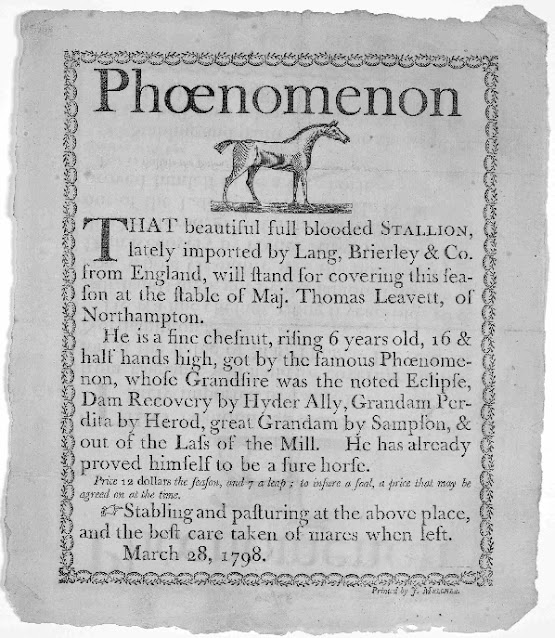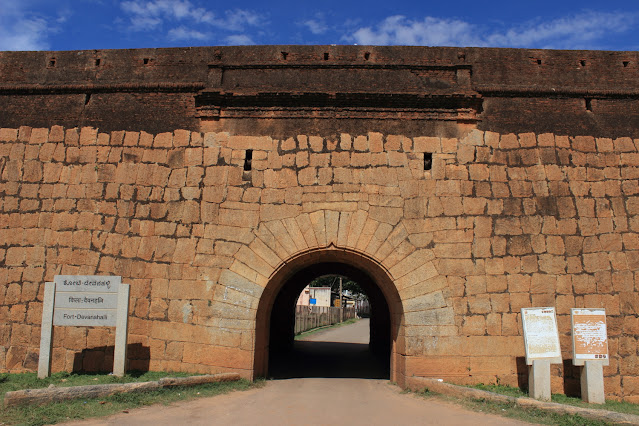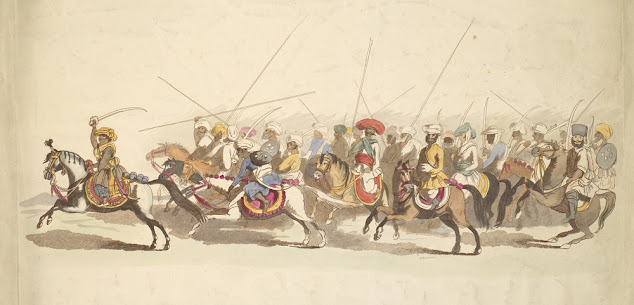When America named racehorses after Tipu Sultan and Haidar Ali over 240 years ago
Research and author: Ameen Ahmed
In 1770s, there were racehorses named in America after Haidar Ali and Tipu Sultan, the father - son warriors from Mysore Kingdom in south India. Let us trace the journey of why and how this happened.
The year was 1749 CE. A 27-year old youth Haidar Ali (anglicized: Hyder Ally), born at Budikote village in present day Kolar district of India's Karnataka state put his military skills in action for the Mysore Army at Devanahalli fort. This is not very far from where the Bengaluru International Aiport (BIAL) is located today. The Mysore Army had besieged the fort for nine months to evict the local Poligor. Poligars (or Palegaras in Kannada language) were the local strong men, each controlling a few fortified settlements, prior to the British rule. Haidar helped his army emerge victorious.
In early 1750s, Haidar was also part of the action between the French and English in their struggle to install a person of their choice as Nawab of Arcot. The Mysore Army had sided with the English, who eventually prevailed. Haidar Ali increased his stature among the military circles of the Mysore Army and was elevated as Faujdar (military officer) of Dindigul in 1755. Led by him, in 1759, the Mysoreans successfully resisted one of the routine Maratha invasions, a first for Mysore Kingdom in many decades. Consequently, he was elevated as the Chief Commander of its army. Haidar’s perseverance in fighting his political foes paid off. In 1761, he was the lone survivor around the utterly weak Mysore King of the Wodeyar dynasty. He proclaimed himself a Nawab soon and found himself the de-facto ruler of Mysore Kingdom, being the most successful in protecting it from invasions of both other Indian kingdoms as well as Europeans (1).
By now, the British East India Company had its eyes set firmly on peninsular India having taken control of Bengal in 1757 as a consequent of the Battle of Plassey. Around this time, thousands of miles away in England, Peregrine Bertie was the 3rd Duke of Ancaster. He had succeeded his father in January 1742 (2). He raised a regiment of foot for the King of England during the rebellion in Scotland in 1745 (3) and was subsequently promoted to the rank of a General in the Army in 1755 and later, in 1759, as a Lieutenant General (4). Peregrine was a leading horse racer who started several racing lines (5). He was appointed Master of the Horse to Queen Charlotte, Queen of Great Britain and Ireland, in 1765. As a military administrator, there was a good probability of him being aware of contemporary military and political happenings affecting British rule in India. In fact, he was transferred within a year from the post of the Master of the Horse to the Queen to that of the King, where he was 'responsible for overall management of all the royal stables, horses, carriages'. This transfer was due to the changes affected by the stockholders of East India (EI) Company in England. The stockholders were apparently alarmed by the acts of the English Prime Minister Lord Chatham to curb the influence of EI Company which by then controlled huge resources and land across in India. Given this background, Peregrine was probably informed of the meteoric rise of Haidar Ali in south India's political and military theatre. Indeed, in 1760, an overconfident English Army detachment under Major Moore tasted its first defeat at the hands of a Mysorean Muqdoom Saheb (anglicized: Mukhdoom Sahib), under Haidar Ali's oversight, at Trivadi near Pondicherry (ibid., ref. 1).
Throughout that decade, Haidar continued to spoil the political, economic and military aims of East India Company in Peninsular India with ramifications beyond this country, given the global nature of the company’s trade. Peregrine named his foal Hyder Ally in 1765 (6,7). Did the military acumen of this Mysorean soldier play a role in the Duke of Ancaster bestowing his enemy with this honour? This may not be surprising, as another racehorse breeder in England named his foal Tippoo Saib in 1769 (8). Just a couple of years ago, in June 1767, 17-year old Tipu Sultan (anglicized: 'Tippoo Saib'), heading a small force of the Mysore Army, stormed East India Company's HQ in south India at Madras. He nearly imprisoned the Madras Councillors who threw themselves into the sea and escaped in a dingy. A year later Tipu recovered Mangalore from the British who fled the fort leaving behind their sick and wounded (9). The military and political deeds of this father-son seem to have left an impression on the British psyche.
Chance- a racehorse imported into USA in 1770s by Col. Tayloe was a line of Peregrine’s Hyder Ally (ibid., ref. 8,10). Interestingly, foals within America were also being named Hyder Ally (and Tippoo Saib) in 1770s. The first Hyder Ally to be foaled in America was in 1777 and four other foals were recorded with the name in 18th century (11, 12). A pamphlet advertisement for a stallion of Hyder Ally's line was published in the city of Portsmouth, USA in 1798 which is preserved in the Library of Congress, USA (13).
In 1782, a ship named Hyder Ally gave the nascent USA arguably its greatest early naval victory (14). To read about it click here.
Sources/ Notes:
1. Wilks, Mark., Historical Sketches of the South of India, Volume 1 of 3, 1810. Wilks traces the origins and political lives of Mysore Kingdom’s rulers and provides an insight into their military campaigns.
2. The New Peerage, or Present state of the Nobility of England, Vol. 1 of 4, 1784.
3. The Gentleman's Magazine, Vol.78, Part 1, 1808.
4. Cokayne., George, Complete peerage of England, Scotland, Ireland, Great Britain and the United Kingdom, 1887.
5. Chivers, Allan., The Berties of Grimsthorpe Castle, 2010. Peregrine established the racing lines of Blank, Paymaster and Pacolet which were well-known in England. Their foals went to establish themselves in the US.
6. Blank was one of his favourite horses and he named a foal sired by it as Hyder Ally.
7. Smith, Nicholas Hanckey., Observations on Breeding for the Turf, G.Whittaker & R.Rogers, London, 1825. Hyder Ally was later sold by Bertie to C.Blake who then sold it to Richard Vernon. The later, in Oct. 1773, raced it at New Market, considered the birthplace and global centre of thoroughbred horse racing. Many of this horse's progeny were imported into America and entered racing.
8. allbreedpedigree.com Online database on Pedigree horses. Downloaded Oct. 10, 2017. It is interesting that it was not uncommon for racehorses to have names originating in the east. Such names in 1700s included Mumtaz Mahal and Salim. But it seems, Pergerine’s only horse named after a human was Hyder Ally.
9. Ali, B Sheikh., Tipu Sultan – A Crusader for Change.
10. American Turf Register and Sporting Magazine, Vol. 2, 1831.
11. Wallace, J.H., American Stud Book, Vol. 1, 1867.
12. Other books that document Hyder Ally foals and sires are William Pick and R.Johnson's The Turf Register, and Sportsman & Breeder's Stud-Book (1803) and Patrick Nisbett Edgar's The American Race-turf Register, Sportsman's Herald, and General Stud Book, Vol. 1 of 2 (1833).
13. Phoenomenon Cut That beautiful full blooded stallion lately imported by Lang, Brierly & Co. from England, will stand for covering this season at the stable of Maj. Thomas Leavett, of Northampton. Description of the horse Stabling and pasturi. Portsmouth, 1798. Pdf. Downloaded on November 05, 2017 from https://www.loc.gov/item/rbpe.08902000/1 .
14. James, Fenimore Cooper., History of the Navy of the United States of America, G.P. Putnam, 1856.
~ ~ ~
ಈ ಬ್ಲಾಗನ್ನು ಕನ್ನಡಲ್ಲಿ ಓದುವುದಕ್ಕಾಗಿ ಇಲ್ಲಿ ಕ್ಲಿಕ್ ಮಾಡಿ
इस ब्लॉग को हिंदी में पड़ने के लिए यहाँ क्लिक करें
~ ~ ~
इस ब्लॉग को हिंदी में पड़ने के लिए यहाँ क्लिक करें
~ ~ ~
You may also like to read...
Aurangzeb’s friendly relations with Chikkadevaraja Wodeyar, Mysore Kingdom’s most successful independent Hindu King
Maratha attacks on temples and towns of Karnataka in 17th & 18th centuries CE
Maratha attacks on temples and towns of Karnataka in 17th & 18th centuries CE
The brave Kannadiga villagers of Tumakuru District who fought off Maratha army plunderers
Persecution and massacres of Hindu Lingayats in context of religious conflict based politics
The Kannadiga victims of Maratha Empire invasions
Sexual violence and misdeeds of the Peshwa Maratha soldiers in Karnataka
Koodli massacre- The forgotten brutalities of Maratha Empire in Karnataka
Persecution and massacres of Hindu Lingayats in context of religious conflict based politics
The Kannadiga victims of Maratha Empire invasions
Sexual violence and misdeeds of the Peshwa Maratha soldiers in Karnataka
Koodli massacre- The forgotten brutalities of Maratha Empire in Karnataka
Eyewitness accounts of 26 Hindu temples / towns attacked by Maratha soldiers, along with Sringeri temple, in 1790 - 92 CE
The forgotten reservations - How Brahmins survived 18th century wars in Mysore Kingdom
Victims or Perpetrators? - Nayars of Kerala in 18th & 19th century CE
The Srirangapatna uprising of 1857 CE
Governments' lust for people's gold
The forgotten reservations - How Brahmins survived 18th century wars in Mysore Kingdom
Victims or Perpetrators? - Nayars of Kerala in 18th & 19th century CE
The Srirangapatna uprising of 1857 CE
Governments' lust for people's gold







Comments
Post a Comment
Thank you for visiting this blog and sharing your thoughts.